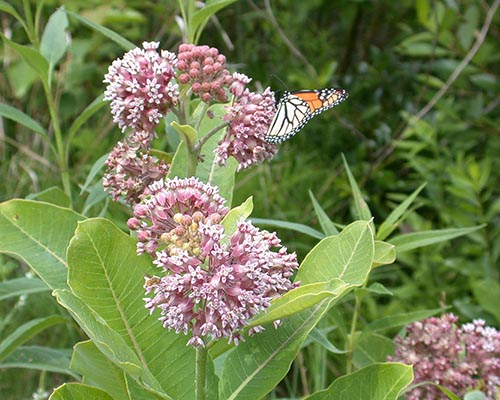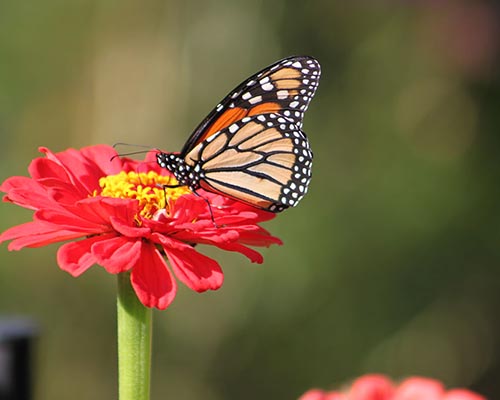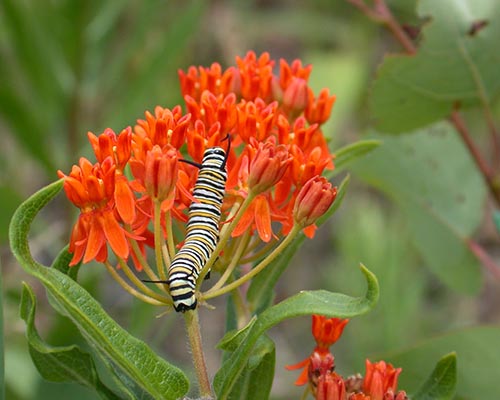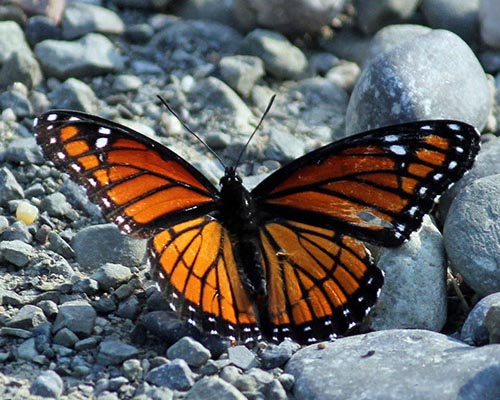Symbiosis is from the Greek for “living together.” A symbiosis is any sort of persistent interaction between two species. Forms of symbiosis include parasitism, which involves a species living off a host and harming that host in the process; commensalism, which involves a species living off a host without harm; and mutualism, which involves two species that live off each other to their mutual benefit. There are further types of symbiosis as well, such as predation, amensalism, antagonism and competition. The symbiosis detailed here is between common milkweed and the monarch butterfly.
Common milkweed (Asclepias syriaca) is a flowering plant commonly found in open areas, roadsides and disturbed areas. It can grow up to 8.5 feet tall. All parts of the plant produce a white latex when damaged, a common defensive strategy. The latex is toxic to many animals, discouraging sheep and cattle from consuming it. It is also sticky and gummy, discouraging insect herbivory.
The monarch butterfly (Danaus plexippus) is common in North America, particularly known for the multigenerational migrations it makes over thousands of miles. During fall migrations, vast numbers of monarchs roost in particular spots, a stunning sight. The bright colors of monarchs are aposematic: they are a warning to birds that the monarch is bad-tasting and toxic.
What do these two species have to do with each other? Where is the symbiosis? Monarchs lay their eggs exclusively on milkweed species in the genus Asclepias, and the caterpillars, which hatch from the eggs, feed exclusively on milkweed. They do not tolerate the milkweed’s latex. Their mouthparts can be glued together by it, causing them to starve, or they can become caught in it, gluing them in place. However, the monarch has evolved a clever strategy to deal with this. The caterpillar begins its feeding on a new leaf by chewing a notch in the midvein of the leaf, at its base. This cuts off the flow of latex to the rest of the leaf, allowing the caterpillar to then feed without difficulty. As for the toxins in the latex, the caterpillar actually sequesters them in its own tissues, and these chemicals are what make the adult monarch toxic and distasteful.
So the aposematic coloration of the monarch is no bluff, and predators that would usually prey on such a tasty and abundant butterfly know it and stay away. However, it is not only the monarch that benefits from this. Another butterfly species, the viceroy (Limenitis archippus), has a symbiotic relationship with the monarch. The viceroy is also toxic and is discouraging to predators in its own right. However, it picks up an added benefit by closely mimicking the appearance of the monarch. It is different in appearance only in the semicircular line on the hind wings and slightly smaller size. This phenomenon of one toxic species resembling the appearance of another toxic species is known as Müllerian Mimicry. Predators learn to avoid both species after an attempt to eat an individual from either species, increasing the benefit of matching appearance for both the viceroy and the monarch.




